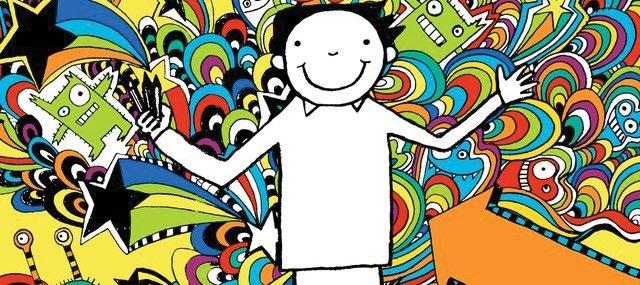previous page
TOC VFX VFX
Tech Reviews L
Blender 2.91
earning how to be a 3D artist involves understanding technique, workflow and best practices more than knowing specific programs. Sure, you can dive into Maya or Houdini or 3ds Max or Cinema 4D, etc. But as a budding artist, the cost of these programs may be out of your price range. This is where Blender comes in: It’s robust, full-featured, is actually used in production and it’s open source —
more robust by including collisions. Users already had ways to pull surfaces around to create wrinkles and buckling in cloth while retaining the surface area, but the collisions now allow one to drape cloth on characters. There are also sophisticated FX with volumes where you can convert fluid volumes to meshes or vice-versa, meshes to volumes. And you can displace these volumes with procedural textures.
by Todd Sheridan Perry
But try looking at Maya or Cinema 4D or 3ds Max tutorials and try to recreate them in Blender. By doing so, you are learning the techniques and methodology of working in 3D, and not just where the correct buttons are in the software. Website: blender.org Price: Free!
L
which means it’s totally free. Blender 2.91 is the latest build— and frankly, I’m a little embarrassed that I haven’t given it the attention that it deserves. The list of features is exhaustive, and ranges from modeling to sculpting to animation to cloth to volumes, to even things that other 3D programs have very little of: internal compositing, tracking, editing and 2D/3D hybrid drawing tools. For me, a few of the brighter highlights in 2.91 are as follows: The Grease Pencil feature is designed to be for 2D animation, while existing in 3D space. The strokes become editable objects. And, traditional 2D tools like onion skinning provide a familiar workflow. New Grease Pencil features in 2.91 include the ability to import black and white images and convert them to Grease Pencil objects. Also, you can paint masks which will act as hold-outs between foreground and background animations. Cloth tools had been introduced in earlier versions, but the developers have taken this feature further. Cloth sculpting has been made www.animationmagazine.net
TOC
The list goes on and on. But, despite the fact that a Blender review is long overdue, and I’m glossing over just how powerful the program is, my primary reason for bringing it up now — in an issue focused on education — is how accessible it is. Everyone with a computer can use it, which means everyone can learn 3D (and 2D) animation without the expense of a software license. While there are many offers of educational or indie licenses of competing 3D programs — $750 can still be out of range for someone just starting out. Blender removes those limitations. As a helpful hint that I frequently applied when I was first starting out, I would use tutorials from other software packages, and learn how to do them in the package I was using. For example: I had learned 3ds Max initially, so when Maya was released, I would use Max tutorials to force myself to rethink the approach and recreate it in Maya. Blender is as powerful as most other programs out there. There are hundreds of hours of training for it.
Foundry’s Katana 4.0
ate last year, Foundry released the 4.0 version of its look development/scene assembly/lighting tool Katana. Within that release are some substantial improvements in workflow and efficiency, but none more important (in my opinion), than the UX for lighting artists. The new Lighting Tools function within the Hydra viewport dramatically increased productivity for look development and lighting. Within the viewport, you get progressive render feedback as you make changes. This isn’t anything new, but the way you make the changes is. Now, through click and gestures (which definitely is optimized for Wacom tablets), you can place and adjust lights. Clicking the surface of the model, you create a light based on how you want it to act on the surface at that point. In the Katana 4.0 workflow, you click on the surface that you want illuminated — and that could be where you want the light, or a specular kick, or a reflection, or even how you want the shadow to land. Then, the light is created pointed at that spot. Through some modifier keys and pen gestures, you can move the light closer or further away, because as all cinematographers know, the proximity of the light is one factor for how bright it is, due to exponential falloff. Or, again with a gesture, scale the light up or down — which will modify the intensity and the softness of shadows. You also have a floating interface within the Hydra Viewer of the most critical parameters of the light you have selected — or all the lights. There is a default set, but you can show more or fewer parameters if you want. The major point is that everything you need to make your lighting adjustments is right there at your fingertips. Since progressive rendering is what this is all about — the fast iterative nature of lighting
54
may 21
previous page



















